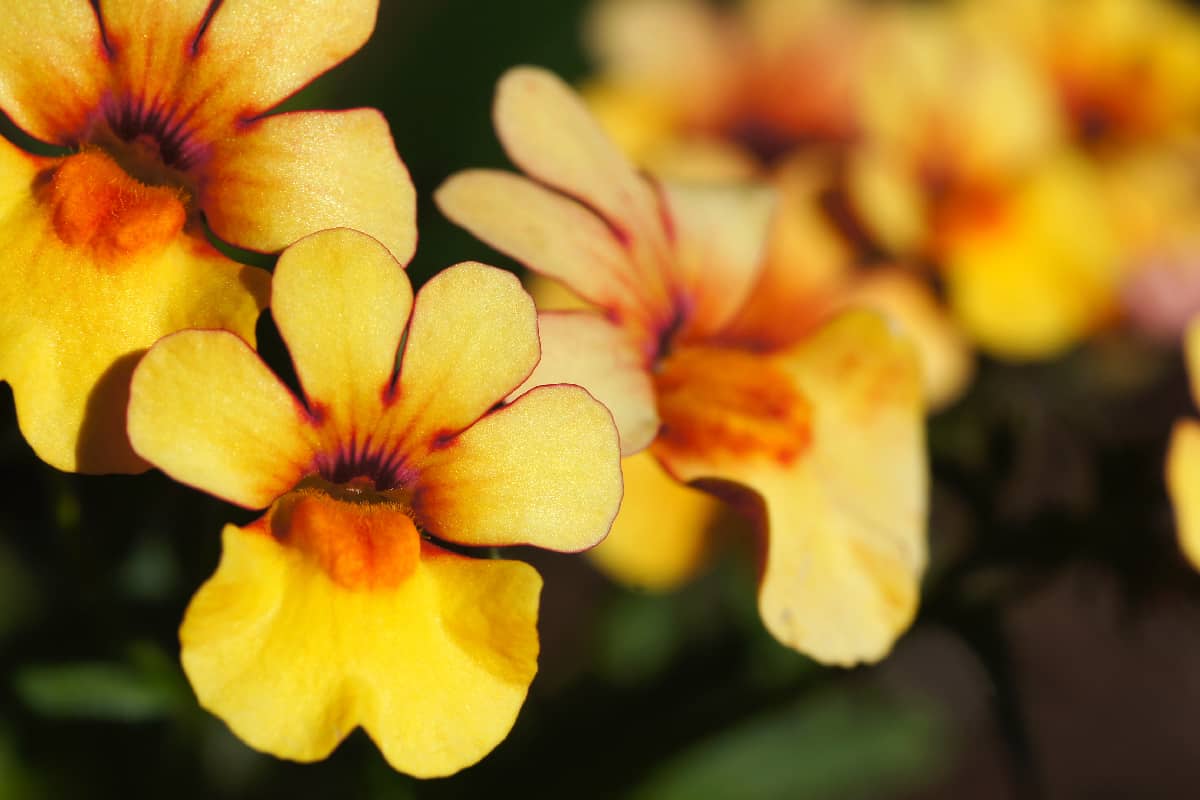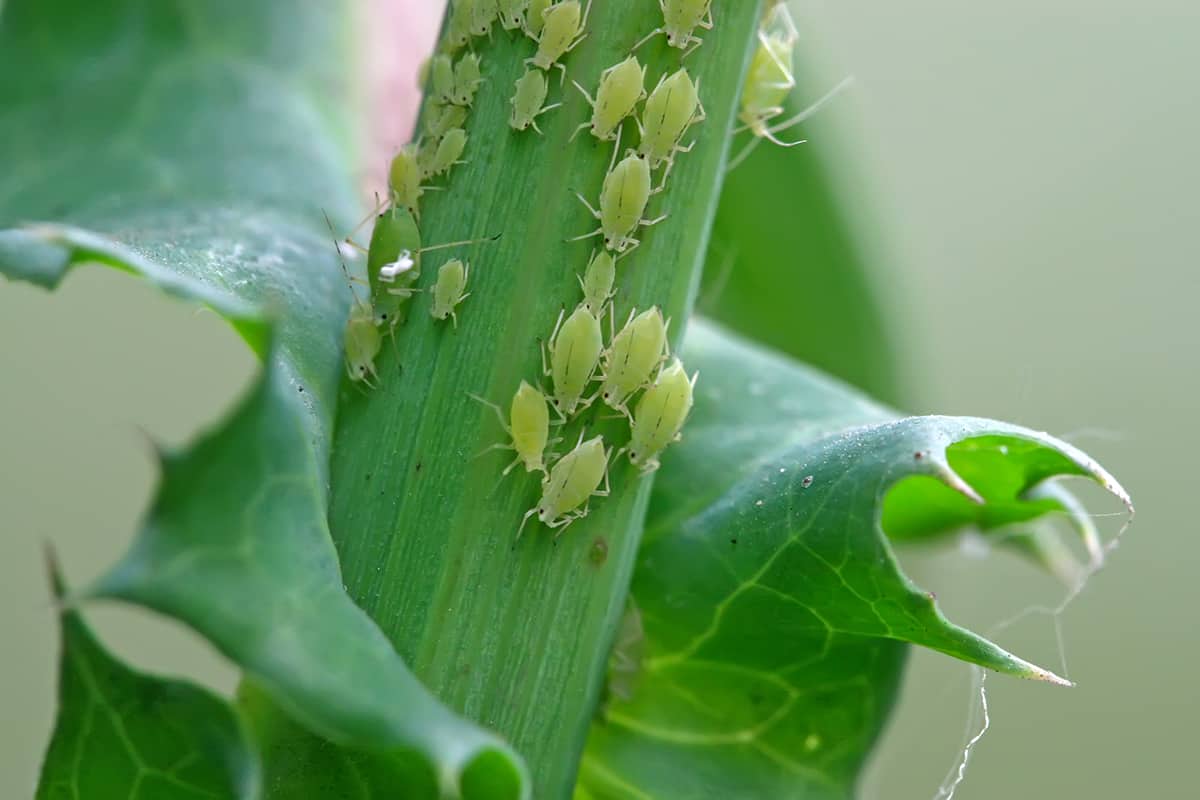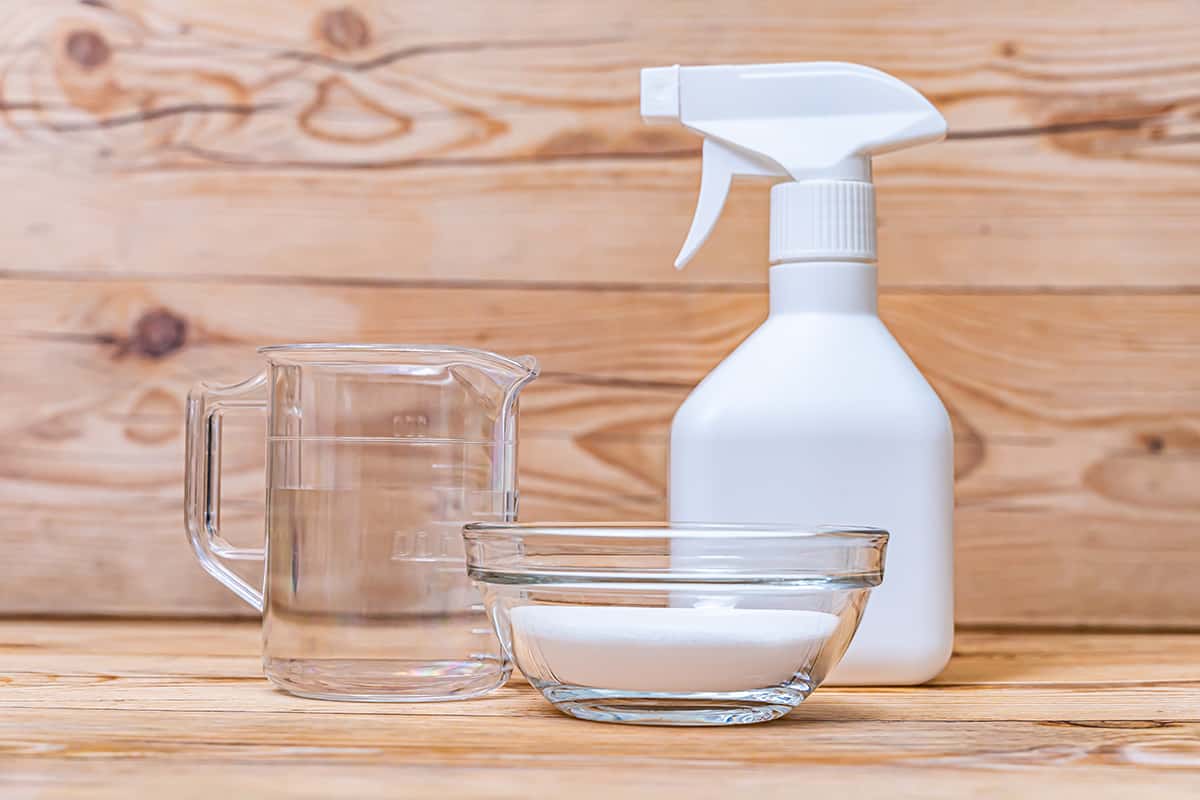The nemesia is generally easy to develop and care for if subject to appropriate growing conditions. But this plant can still be susceptible to wilting, and perhaps eventually dying. So what can you do to care for your nemesia if it's showing signs of dying? We researched this concern and here's what we found.
Pruning dying nemesias may help the plants to bloom again. But it’s important not to trim too much or too little of the plants. Otherwise, further complications could arise.
So continue reading as we talk about the right way to help a nemesia plant regrow. We’ll also talk about relevant yet still important information about this plant, including its characteristics and the signs to watch out for if it’s wilting.

What Are Nemesia Plants?
It's important to understand the characteristics of nemesia plants to help ensure their proper growth. If grown correctly, nemesias typically grow to about 6 to 12 inches tall. This plant will usually have a lance-like appearance, with two tube-like flowers.

Nemesias also come in a broad range of colors, including cream, blue, brown, and pink. These plants also like cold climates, which can make it challenging for them to grow during the intense summer heat.
Apart from the different colors, nemesias also have different types like:
- Shooting stars: Often has yellow yet unusual-looking flowers.
- Berries and cream: Typically grow as a group of mauve, purple, and white flowers.
- Wisley vanilla: Usually has pure white flowers with a yellow eye at their centers.
- Sunshine: Contains bright yellow flowers that fade to a pale yellow.
- Ice pink: Generally has baby-pink or soft pink-colored flowers.
Why Is My Nemesia Wilting?

Nemesias can be prone to acquiring issues during their plant lives. Leaving these problems alone may lead to the plants’ wilting and dying. Some of the relatively common problems you may come across with these plants are:
Fungal Infection
If left unchecked, nemesias can be vulnerable to fungal diseases. You’ll typically know if your nemesia plants have fungal infections by powdery mildew growing on their leaves and stems. Also, if you leave the mildew alone, it can spread to other plants in your garden.
Aphids

Nemesias are also susceptible to aphid infestations. These soft-boiled insects feed on the sap of different plants, including nemesias.
Look for signs of aphid attacks, such as:
- Visible presence of the insects
- Curled and/or twisted leaves
- Yellowing leaves
- Slower-than-normal plant growth
- Unopened flower buds
Inadequate Fertilizer
If you notice that your nemesias have yellowing leaves, it can be a sign that the plants need extra fertilizer. This discoloration comes from nitrogen deficiency. An increased lack of the correct fertilizer for your nemesia plants may also prevent the buds from flowering.
Western Flower Thrips
The western flower thrip is another insect that can feed and perhaps kill nemesias. These bugs have yellow to dark brown round bodies. The insects’ mouths will pierce through plant cells, resulting in signs like:
- Flower deformation
- Silver patches on the leaves
- Unusual leaf growth
Hot Temperature

As mentioned previously, nemesias often thrive in cold weather. These plants can still tolerate mild summer temperatures ranging from 32 to 34 degrees Fahrenheit. But you may still grow nemesias up to 75 degrees Fahrenheit, although you might run into some difficulties in caring for them.
However, placing these florae underneath temperatures higher than 75 degrees Fahrenheit may cause their flowers and leaves to burn. This event may also lead to hardening, which can make the flowers and/or leaves fall off their branches.
Over-Watering
Many plants need water to survive, including nemesias. But watering nemesia plants too much can cause them to drown. Eventually, this predicament can lead to stem rot, which is a fungal disease characterized by the discoloration of the stem.
How Do You Revive Nemesia?
Pruning a dying nemesia may give it new life. Cutting the dying flower, leaf, branch, or stem might provide another chance for the plant to bloom a second time.
Take note that pruning too much or too little may not give the wilting nemesia sufficient opportunities to bloom again. Only cut the unhealthy part of the stem. If you remove a healthy region, the plant might find it difficult to regrow the lost blooms. On the other hand, pruning less of the stem and leaving some of the ill areas may cause the sickness to spread to the rest of the plant.
Also, ensure that you sanitize the pruning shears that you’re using. You can watch the video below to see the steps for that particular procedure:
Another option is to purchase new shears. This alternative can be a good choice if your old pruning shears are dull or unusable.
Check out this product on Amazon.
How To Care For Nemesia Plants?
Like other plants, nemesias generally require gardeners to follow the correct planting and care procedures to ensure healthy plant growth. Take note that these processes start from the sowing and don't finish until the end of the plants' lives (which generally lasts about 1 to 2 years).
Take note of the following planting and maintenance procedures to help you care for your nemesia plants and prevent them from dying early:
Preparation
Start germinating nemesia seeds indoors approximately 8 weeks before the first day of spring. Do this task by placing the seeds in a seed tray. The seeds should be with vermiculite and some organic compost. Then, water the soil lightly so it’s only damp slightly.
Transplant
Wait for the seedlings to grow about 2 inches tall. Then, pinch the tips to help motivate an abundant bloom.
Transplant the nemesias into your garden after the last day of winter’s frost. Ensure that the relatively small plants are 4 to 6 inches apart. Interrupt the roots and pour water into the soil afterward. Then, insulate the roots with natural mulch and prevent cold temperatures from harming the plants.
Also, make sure that the plants receive sufficient sunshine for their new location. However, the nemesias shouldn’t be under direct sunlight for extended periods.
Maintenance
Maintaining nemesias’ health is typically a relatively straightforward routine task. In particular, you should only need to moisten the plants and the soil underneath them. The plants should remain healthy as long as you don’t under- or over-water them.
How To Prevent Nemesia From Wilting?
Proper care is vital for nemesias to thrive. Gardeners should also take preventive actions to ensure hazards won’t fall upon these plants. Some of these precautionary measures are:
Remove Powdery Mildew
As mentioned earlier, powdery mildew can spread to other plants on your lawn if left alone. You can prune the mildew-affected nemesia as soon as you see signs of the fungal infection.
Here are alternate solutions that can help treat powdery mildew from your nemesias and other plants on your property:
Baking soda

Mix a tablespoon of baking soda with ½ teaspoon of mild liquid detergent. Put this mixture in a spray bottle. Then, apply it to the offending areas.
Milk
Mix 2 to 3 parts water with 1 part milk. Again, pour the solution into a clean spray bottle and apply it to the affected areas. This solution may not only fight the illness but also prevent it as well.
Powdery Mildew Fungicide
If you don’t want to go the DIY route, you can purchase a commercially prepared powdery mildew killer. Search for organic fungicide killers with sulfur to help treat and prevent this disease from your nemesias.
Check out this product on Amazon.
Prevent Aphids
Stop aphids before they reach your nemesias with the help of these techniques:
Apply Insecticides
Chemical insecticides or pesticides are available for purchase and use to help prevent aphids from feasting on your nemesias. But be wary as some of these solutions are quite harsh, which may also bring harm to the plants.
Remove Weeds
Aphids often like to nest and breed in overgrowth. So removing weeds around your nemesias may help deter the bugs from using your nemesias as food sources.
Attract Natural Predators
Other animals and insects can find aphids to be a nutritious and tasty food option. You can attract the aphids’ natural predators by planting flowers like daisies, dill, and sunflowers in your garden. Another option is to release ladybugs in your garden as these insects can prey on the aphids and their eggs.
Check out these live ladybugs on Amazon.
Final Words
Nemesias may die earlier than normal because of different reasons like a fungal infection or improper care. You can prevent this tragedy from happening by finding out the possible causes of early nemesia deaths. Then, apply the appropriate prevention method and prune off the ill portions to allow the plant to regrow.
If you like this post and would like to know more about how to care for other plants, check out these other great reads:



